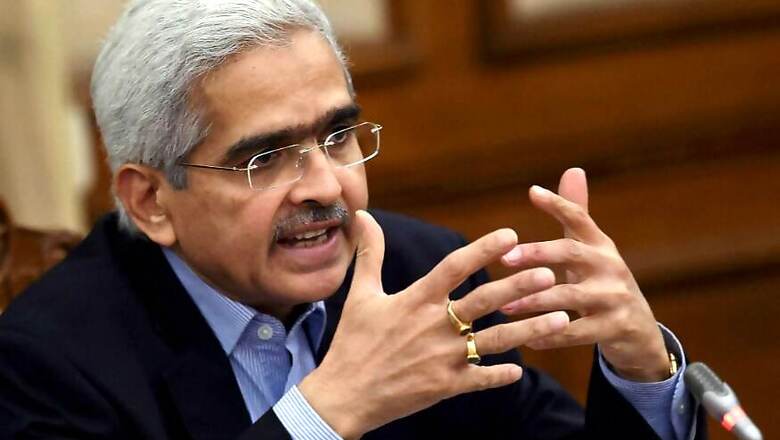
views
New Delhi: The Reserve Bank of India’s (RBI) monetary policy committee (MPC) that started its fortnightly meet on policy repo rates on June 4, will be coming out with its report on June 6. This is the first RBI meet after the new Narendra Modi government took charge.
Amid slowing GDP and markets in stress ever since the IL&FS defaulted, analysts are expecting at least 25 basis points reduction in the policy repo rate. The demand for monetary easing is in the wake of relatively unstable inflation trend and big drop in the crude oil prices.
The relationship between the RBI and the government remained contentious through much of the period during the government’s previous stint, which culminated in the resignation of then governor Urjit Patel. The Monetary Policy Committee (MPC), headed by Governor Shaktikanta Das, cut the policy repo rate twice in a row in 2019.
In the last MPC meet in April 2019, the RBI had reduced the policy repo rate by 25 basis points to 6 per cent, while maintaining a neutral stance, as retail inflation was contained within the 4 per cent target.
In February, the MPC had voted by a 4:2 majority in favour of reducing the policy repo rate by 25 basis points.
The RBI in its decision will be driven by the assessment of both domestic and global developments. Domestically, the monthly report of the Ministry of Finance, released on May 1, indicates a decline in the real GDP growth further from the levels in Q3 2018-19 to less than 6.5 per cent. The estimates of national income for 2018-19 released by the Central Statistical Office (CSO) show that the economy slowed down further.
The deceleration in economic activity for the fourth consecutive quarter in 2018-19 to the level which is the lowest in the last five years can be explained by the slowdown in consumption over the past two years, especially in the March quarter. This was reflected in declining two-wheeler sales and auto sales in general, which are considered as lead economic indicators.
The government’s fiscal situation continues to be challenging as revenue expenditure has been higher in recent months.
Also, global demand continues to remain weak. The Chinese economy grew 6.4 per cent in the March quarter while the GDP growth in the US was at an annual average rate of 3.2 per cent in the first quarter of 2019. The US-China trade war and the tariffs imposed on each other are likely to result in decline in growth in both countries.
Yield curve inversion, as has been witnessed in the US bond markets last month — a key relationship between the 3-month bill and a 10-year note inverted by 14 basis points — is said to be a reliable recession indicator, historically. These would indicate the possibility of a Fed rate cut later in the year.
Against the backdrop of such domestic and global developments, it seems highly likely that we may witness a policy rate cut in the upcoming monetary policy review to be announced on June 6. This would also be in line with the expectations of the government, which has been voted in with a massive mandate. How effective such a rate cut would be in bringing about the desired increases in private investment, however, remains to be seen.


















Comments
0 comment